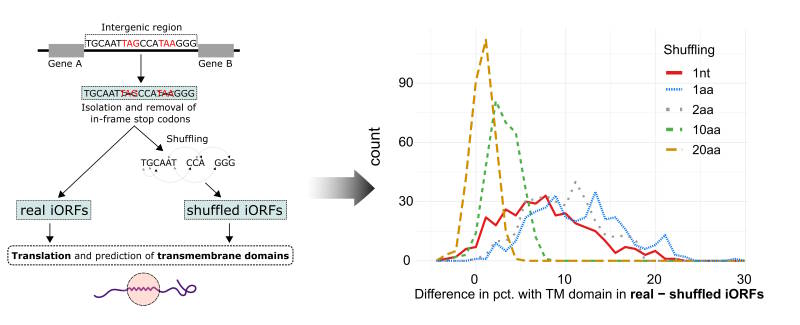A new study by Tassios et al. (Nikolaou lab, Vakirlis lab) reveals a mysterious genomic property of yeast genomes.

Transmembrane (TM) domains are a common structural and functional feature of proteins in all organisms. Research has shown that such structures can also occur by chance, when random sequences of DNA get computationally translated into protein sequences. Intriguingly, a recent study demonstrated that TM domains also occur, and indeed occur much more than expected, when sequences that fall outside of known protein-coding genes in the genome of baker's yeast (S. cerevisiae), called intergenic regions, are computationally translated into small proteins. This finding is important since it is known that entirely novel genes can evolve out of such intergenic regions through a process known as de novo gene birth. In a new study published in Molecular Biology and Evolution, Tassios et al. showed that this property of intergenic regions, termed TM-enrichment, exists in most Saccharomycotina genomes, the subphylum of all budding yeasts. Pervasive, but variable, TM-enrichment is found across the whole subphylum regardless of the sequence composition and size of intergenic regions. It is spread across the genome and is not correlated to hydrophobic content of the predicted proteins, or the presence of regulatory DNA sequences in intergenic regions. While the precise sources of this property remain unclear, it constitutes an intriguing genomic mystery which might turn out to have significant implications for our understanding of the biology of genomes.
Reference:
E. Tassios, *C. Nikolaou, & *N. Vakirlis. Intergenic regions of Saccharomycotina yeasts are enriched in potential to encode transmembrane domains. Molecular Biology and Evolution msad059 (2023) doi: 10.1093/molbev/msad059.